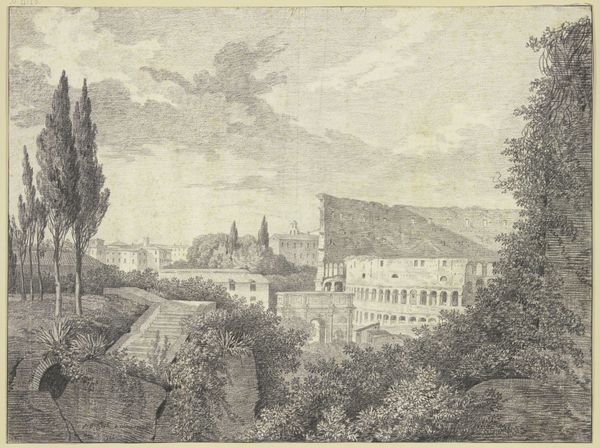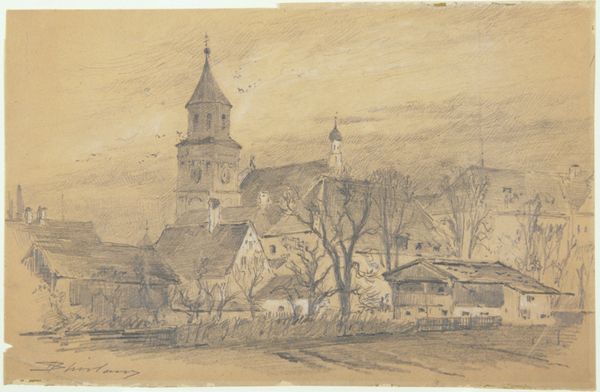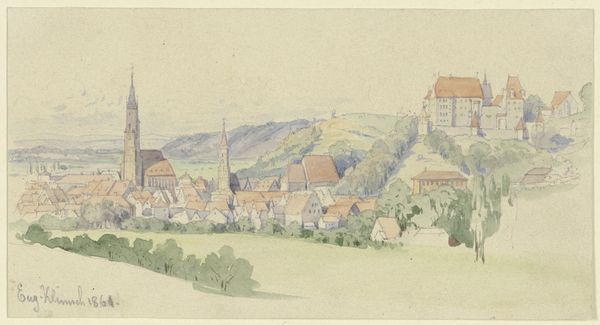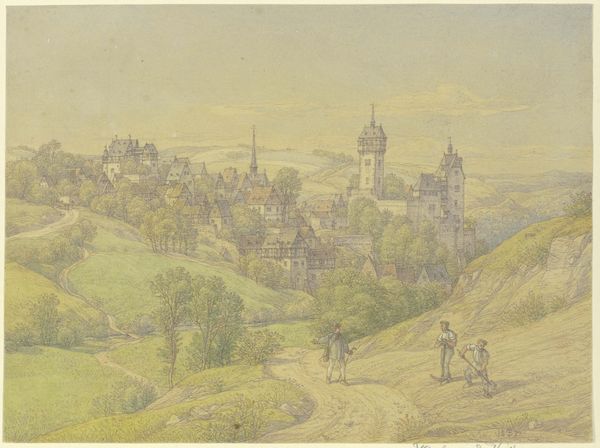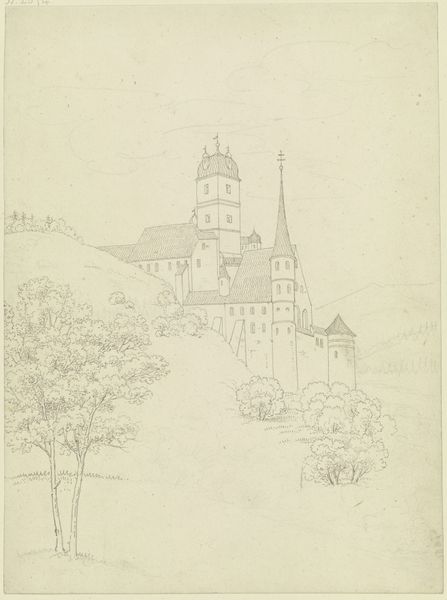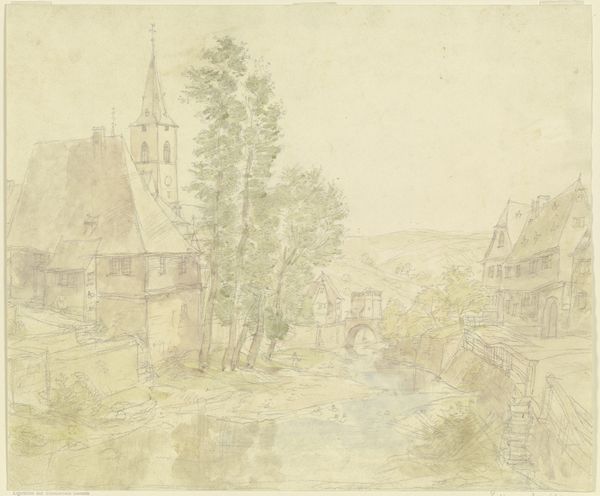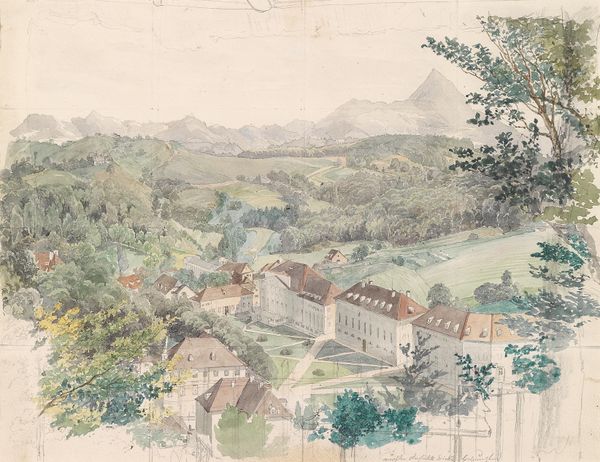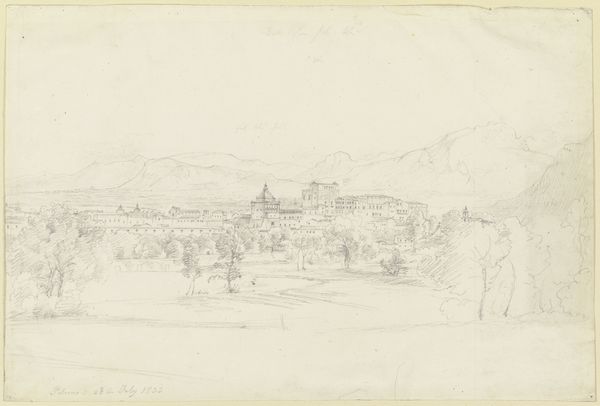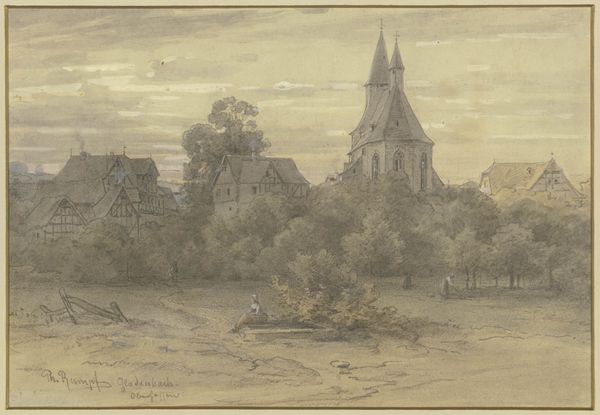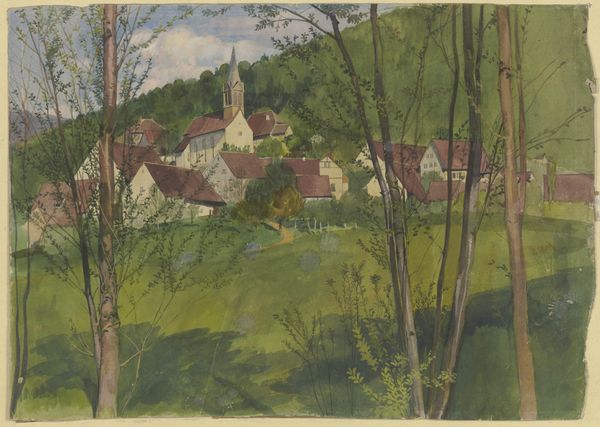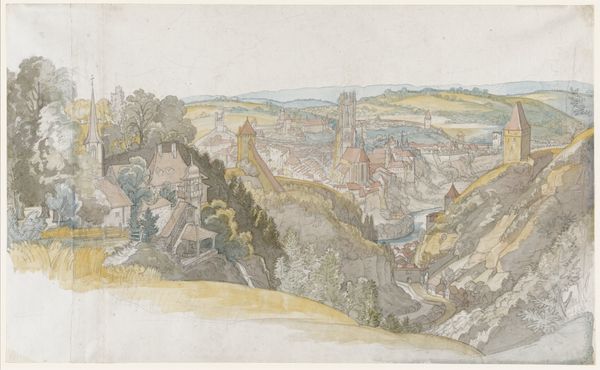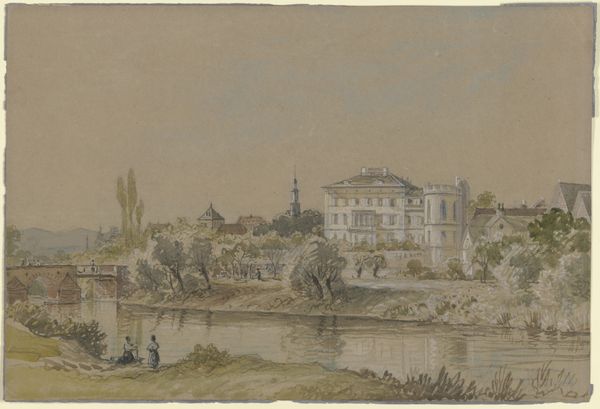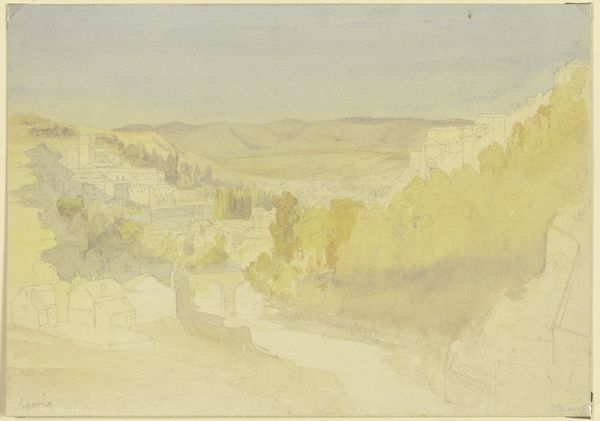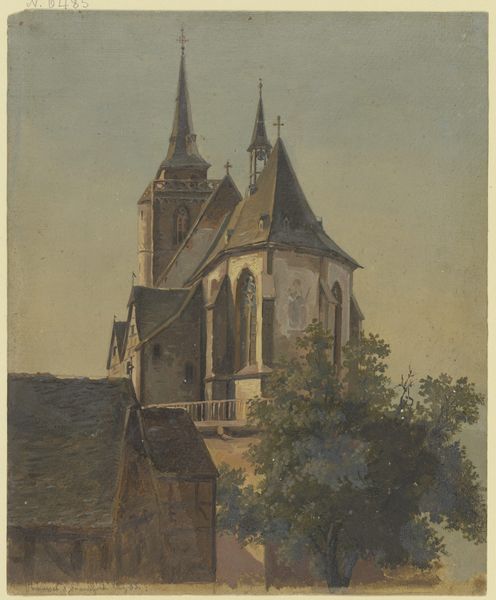
Copyright: Public Domain
Curator: Ah, Friedrich Eugen Peipers' "Schandau with the Lilienstein," sketched in 1873. It's quite captivating, wouldn't you agree? Editor: There's a strange serenity, like a muted lullaby. It feels very distant and softened by time and weather. Curator: Indeed. What's interesting is Peipers’ devotion to plein-air painting. You see here a tangible representation of a moment, an environment carefully observed and captured, a method facilitated by readily transportable colored pencils. He returned from active service and really immersed himself in the detailed examination of nature. Editor: The technique, using pencil and watercolor, certainly contributes to that softened feeling. There's an interesting tension between the rather sharp architectural detail of the church and the blurred mountains behind. Curator: Precisely! I see here his engagement with the specific environment and topography of the region as it shaped social and even architectural constructions, literally and metaphorically. These architectural forms required very different labor and manufacturing processes than, say, natural forms. How do you perceive it relating to Romantic landscape painting? Editor: The scale of nature dwarves the human presence, definitely fitting within Romanticism, but without the dramatic flair of, say, a storm. It is, instead, a quietly powerful vastness. There is no sublime drama. Just the facts. It lacks an emotional story or explicit symbolism in the usual sense. Curator: It is understated but there. Consider his commitment to detailed representational observation in combination with available methods. In those choices is expressed both devotion and discipline. Editor: That devotion becomes a kind of meditation then, in pencil strokes. I also can't help but think of what's been lost and added in the scene in the past one and a half centuries since this drawing was made, environmentally and socially. Curator: I see how that informs your reflection on Peipers' decisions as well as the socio-economic factors implicit in artistic labour and environmental representation in his time and ours. A very pertinent line of thought, actually. Editor: I do think about how we frame a new perception. Thank you, that gives me an approach to Peipers. Curator: Thank you. This piece still provides fodder for meaningful engagement.
Comments
No comments
Be the first to comment and join the conversation on the ultimate creative platform.
